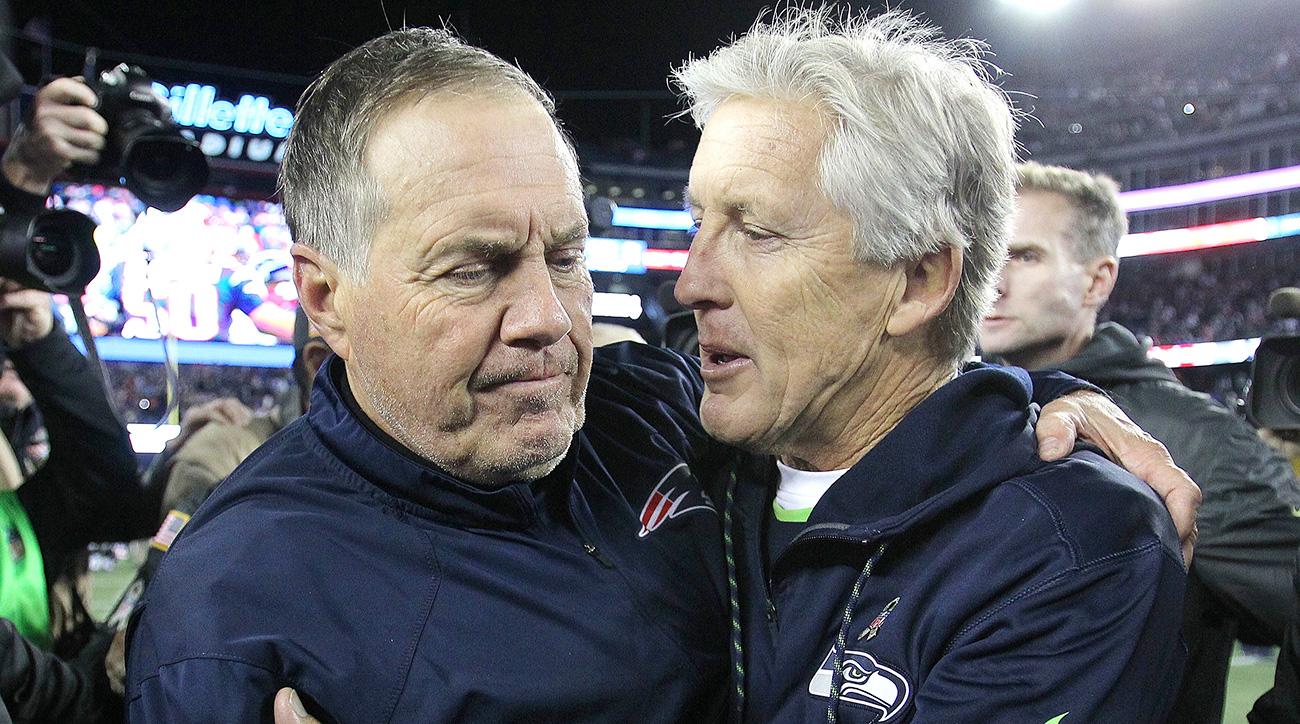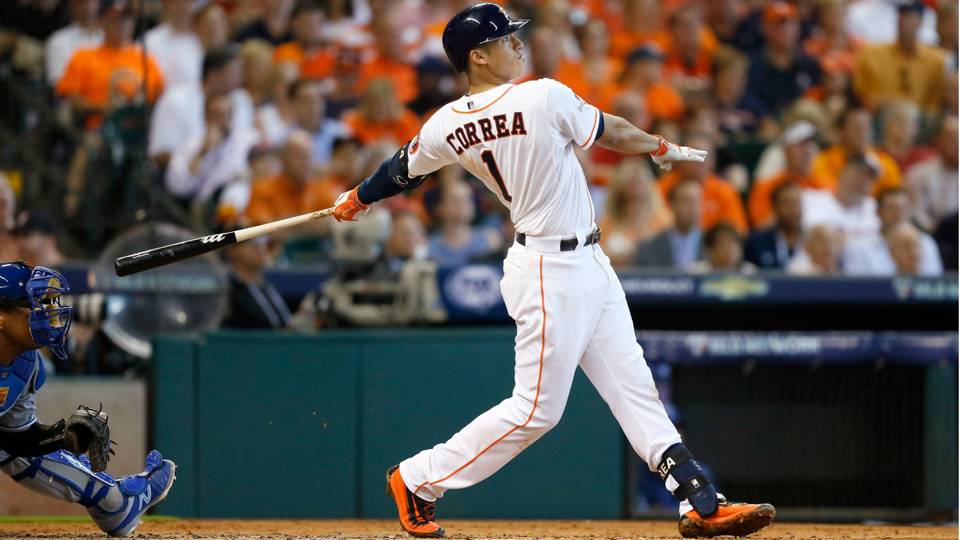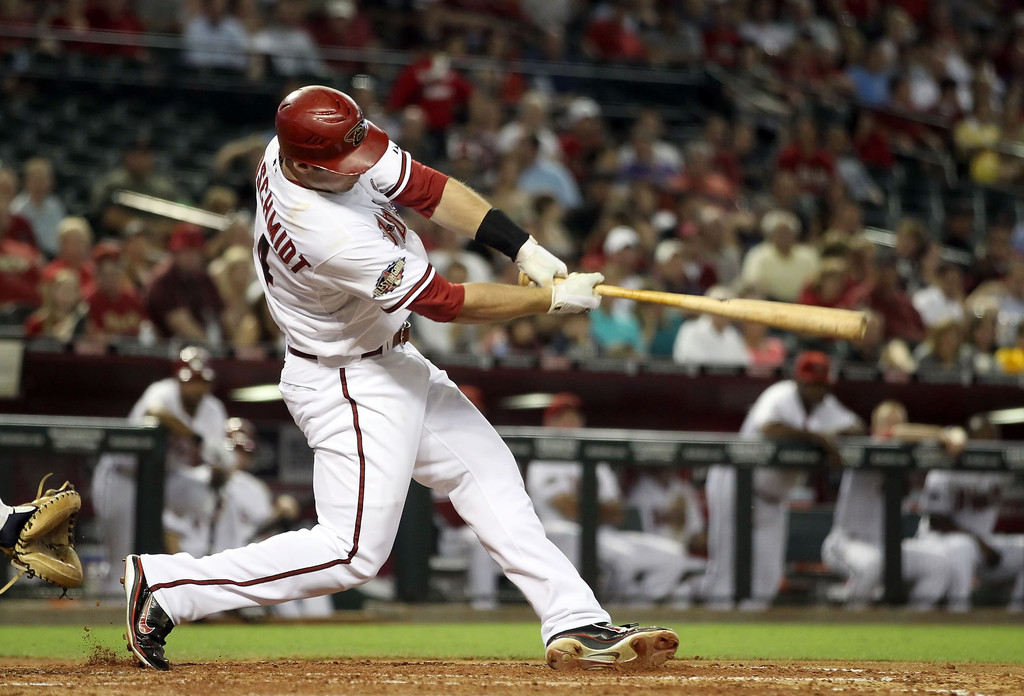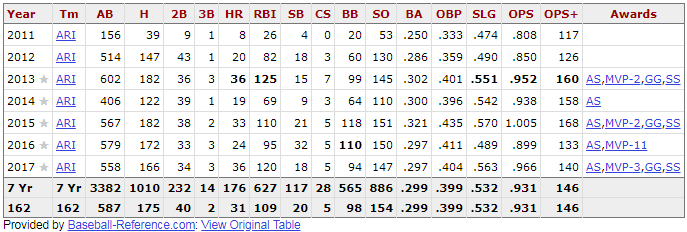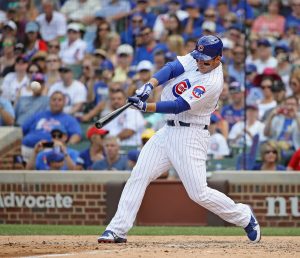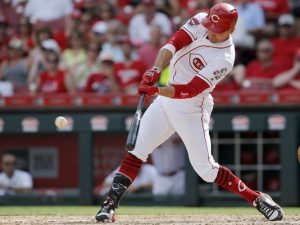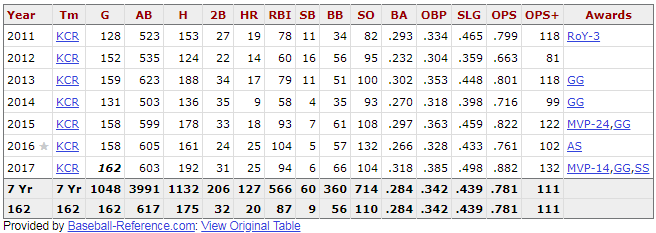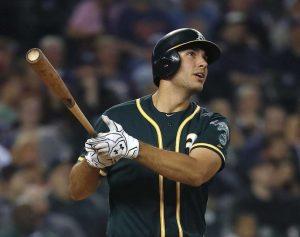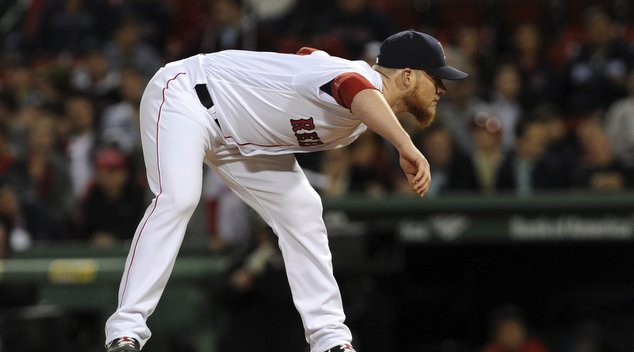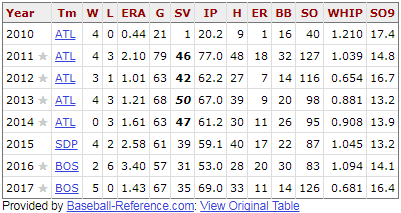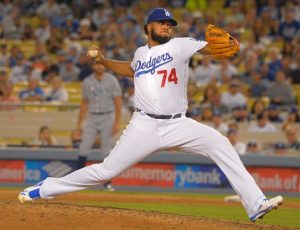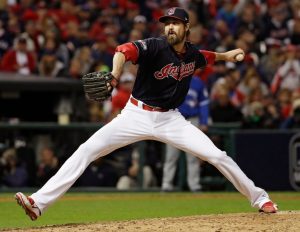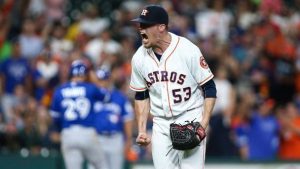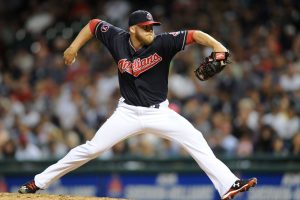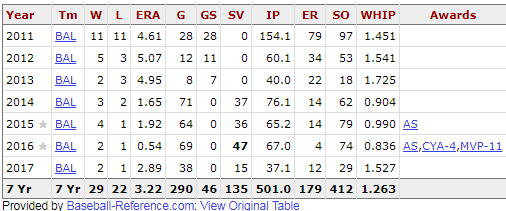The shortstop position has become increasingly talented in recent seasons. The position is now the best, and deepest, arguably since Nomar, A-Rod, and Jeter were reigning supreme nearly two decades ago. The top five is loaded, and the position has great depth. The shortstops near the bottom of my top ten list would have threatened the top five a few years ago. Shortstops not making the list would have been safely included. With all this competition, it was hard to leave a few guys off.
1. Carlos Correa
Correa is coming off a season with an OPS 65 points higher than Manny Machado has ever posted. With all of Machado’s fanfare and his big home run seasons, this was a surprising revelation. Just 22 years old last season and having posted a .941 OPS, Correa is the top shortstop to own for the long haul in the Majors.
Correa burst onto the scene in 2015, winning Rookie of the Year in a little more than half a season. Over his three seasons, aged 20-22, he has batted .288 with an .863 OPS. There is only room for improvement as he enters his age 23 season. Correa missed time last year, hitting 24 home runs in only 109 games. Assuming he stays healthy, I foresee his first 30 homer, 100 RBI season this year. Correa has also proved himself on the big stage at such a young age, homering five times during the postseason last year.
Correa is also fairly polished at shortstop at his young age. He has a solid .978 fielding percentage in each of the last two seasons and has a positive dWAR in all three. According to baseball reference’s total zone runs, Correa was worth eight defensive runs above average this past season.
2. Manny Machado
Primarily known as a third baseman, and a fine defensive one at that, Machado is moving to shortstop full time for this coming season. He started 43 games at the position last year, performing adequately but posting a negative zone rating. With a full offseason to prepare, maybe he will be a little better in 2018. After all, Machado was a two time Gold Glove winner at third base.
He also needs to rebound at the plate, coming off his worst season since 2014. That’s not to say he was bad, he did hit 33 homers after all. However, Machado’s average fell from .290 over the previous two seasons down to .259. His OPS also dropped nearly 100 points. I would expect a bit of a rebound, he did finish in the top five in back-to-back MVP votes before last season. Machado has also homered 105 times over the past three years. If there is one place where his skill set lags a bit behind, it’s in taking pitches and drawing walks. Machado has drawn a total of 49 walks over the past two seasons and posted a disappointing .310 on-base percentage last year.
3. Corey Seager
Seager was my favorite prospect in baseball after batting .349 with 20 home runs in 2014. He came in 5th in Baseball America’s prospect rankings heading into 2015, and his performance catapulted him to the top of their list for 2016. Two full seasons into his Major League career and he has not disappointed. Seager has batted .305 during his short career while posting an .876 OPS. He already has a Rookie of the Year, two Silver Sluggers and a third place MVP finish.
Seager has a beautiful, level swing, leading to a lot of hard contact. Despite hitting only 22 home runs, Seager had a top 25 average exit velocity in all of baseball last season. His 25% line drive rate was in the top ten. This leads me to believe that Seager will improve upon both his 22 home runs and his 33 doubles from a year ago. Two years ago he had 26 homers and 40 doubles, and it wouldn’t even be a surprise to see him eclipse those. Even if he doesn’t, Seager is an excellent, well-rounded hitter. He has a .374 career on-base percentage with a .502 slugging percentage.
Seager made some strides in the field last year, which makes sense given he was still only 23 years old. He cut his errors down from 18 to 11 while improving his fielding percentage to .979. Seager also went from two runs saved below average in 2016 to 11 runs above average last year. He might not wow in any one category, but Seager looks like an across the board producer for years to come.
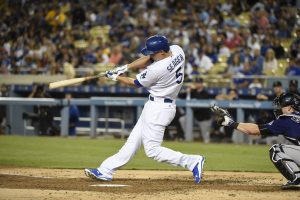
4. Francisco Lindor
Lindor turned into a very different player from the one that he was expected to be last year. Coming through the minors, he was projected to be a high contact hitter who would play excellent defense. That’s exactly what happened his first two years, batting over .300 both seasons with moderate pop. Last year, his average dropped down to .273 while his home runs more than doubled to 33. His doubles also skyrocketed, going from 30 to 44. Lindor seemed to sell out a bit for power, which wasn’t necessary given his excellent performance to that point. It leaves me curious to find out which Lindor we will see moving forward. Either way, both are excellent players.
Lindor is an excellent defender, posting a 5.7 dWAR in less than three full seasons. He has posted a 49 defensive runs saved above average during that time and has a .981 fielding percentage. His glove work netted him the Gold Glove in 2016.
5. Trea Turner
After being a top prospect, Trea Turner has been electric since getting the call to the big leagues. After getting a chance in 2016, Turner was one of the very best hitters in baseball. He batted .342 with a .937 OPS. Trea Turner is also a burner on the basepaths and stole 33 bases that season. Last year, his numbers dropped off a bit, as they almost had to. Turner batted .284 with a .789 OPS while missing some time with injury. He again showed off his wheels, stealing 46 bases in only 98 games.
I don’t think Turner is as good as he was two years ago, but is probably better than last year. When you combine the two seasons, you get a .304 hitter with an .840 OPS. With his gap power and his speed, Turner gets a lot of extra-base hits, averaging 32 doubles and 11 triples over 162 games for his career. He seems to be capable of hitting .300 with 15-20 home runs while hitting a lot of doubles and triples. All of this and he is also capable of stealing 50 bags.
Turner falls well behind the rest of the pack in the field though. Despite being relatively sure-handed, Turner does not have the range for the position. He had a decent .979 fielding percentage last year, yet his total zone rating gave him 11 defensive runs below average last season. His range factor, at 3.91, was easily below the average of 4.15. Second base could be in Trea’s future.
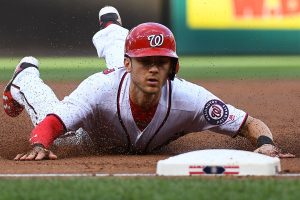
Brad Mills – USA Today Sports
6. Didi Gregorious
Remember when Didi was a glove first prospect? Coming through the minors, he was supposed to be a light-hitting, glove first shortstop. His defense has been decent, but nothing special to this point. However, his bat has carried him. Gregorious is one of the better hitting shortstops in baseball, hitting 45 home runs over the past two seasons. This is after he homered 26 times in over 2000 minor league at-bats. It isn’t just Yankee Stadium either, as Gregorious posted far better stats on the road last year.
One thing that holds Gregorious back some at the plate is his lack of walks. Gregorious has only drawn 44 walks over the past two seasons combined. This has led to a sub-par .311 on-base percentage despite a good .281 batting average. He doesn’t strike out much though, making consistent contact requiring fielders to make a play on the ball. Take the good with the bad and I actually think this Yankee is a little underrated.
7. Paul DeJong
DeJong is a player who wasn’t on the radar of many people last year. He never made any top 100 prospect lists, so he wasn’t well known outside of the St. Louis organization. That’s not to say there isn’t some pedigree to his performance though. DeJong was a fourth round pick in 2015 and hit 22 home runs in AA the following year. Last year he had an OPS over .900 in AAA when he got the call-up to the Cardinals.
DeJong mashed the ball at the big league level, hitting 25 home runs in 108 games. He had a .285 average for the season, so it wasn’t a power or nothing approach. Despite him not cracking any prospect lists, I think based on his high draft position and his performance in the minor leagues that DeJong’s bat is for real. His glove was relatively average based upon every metric, but that kind of bat coupled with an average glove is a heck of a shortstop.
8. Andrelton Simmons
Simmons is on here for one reason; he is one of the best defensive shortstops you will ever see. Simmons routinely makes the highlight reels for the plays he makes in the field. He has a .982 career fielding percentage which doesn’t come close to telling the whole story. Simmons tends to get to a lot of balls others wouldn’t, which can lead to a few more errors. His range is in a class by itself.
Simmons bat took a step forward last year, so it will be interesting to see if the juiced balls helped aid that or if he is making progress. After posting just a .664 OPS over the previous four seasons, Simmons had a career high .752 OPS last year. He hit .278 with 14 home runs a year after batting .281 in his first season with the Angels. He kept his average up from his Atlanta days while adding a little more pop.
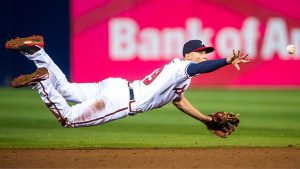
9. Xander Bogaerts
Bogaerts is still only 25 despite being a part of the Red Sox World Series team in 2013. There is a pretty good chance I am underselling Bogaerts in this spot, as he was a huge prospect who has proven capable of hitting well in the majors. Bogaerts was twice a top 10 prospect in all of baseball according to Baseball America, topping out at second in 2014. He also has a season in which he batted .320 and another during which he homered 21 times. Bogaerts was off to a good start last year, batting .303 in the first half. A wrist injury caused his hitting ability to fall off in the second half and leave him with a .273 average. A healthy Bogaerts could hit .300 with 20 home runs.
If Bogaerts does rebound at the plate, his glove is still likely to hold him back some. He has a negative dWAR in three of his four seasons and negative defensive runs saved in all four. His .977 career fielding percentage at the position isn’t bad, but his range is well below average.

Red Sox shortstop Xander Bogaerts hits a ground-rule double to right in the ninth inning of the ALCS, Game 4 at Comerica Park against the Tigers in 2013. Staff Photo by Matt Stone
10. Elvis Andrus
Andrus is someone I considered the most overrated shortstop in baseball for a few years. Given a big contract, Andrus batted just .264 with a very weak .657 OPS from 2015-2017. However, Andrus now has two consecutive years of good play at the plate in addition to his defense. After seven years in the league, Andrus batted a career high .302 while also hitting a career high eight home runs in 2016. Yes, eight was his career high after eight seasons and he somehow hit 20 home runs last year. A little change in his approach may have helped, but I am a little skeptical of him repeating that. Even still, he batted .297 a year after hitting .302. He also saved 23 runs above average on defense according to the total zone rating on baseballreference.com.
Honorable Mentions:
Jean Segura, Dansby Swanson, Addison Russell, Zack Cozart, Orlando Arcia, Trevor Story
Featured picture from the Sporting News
